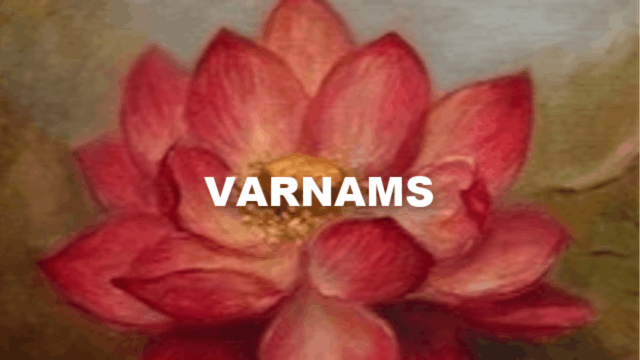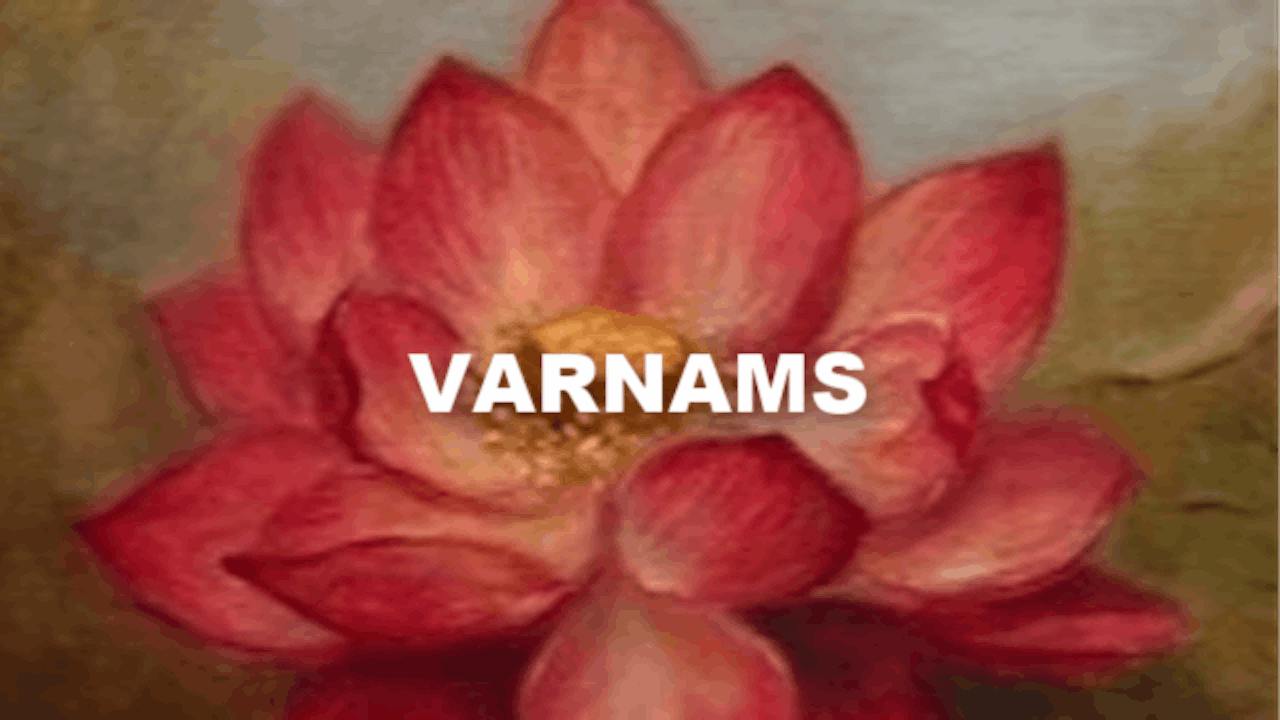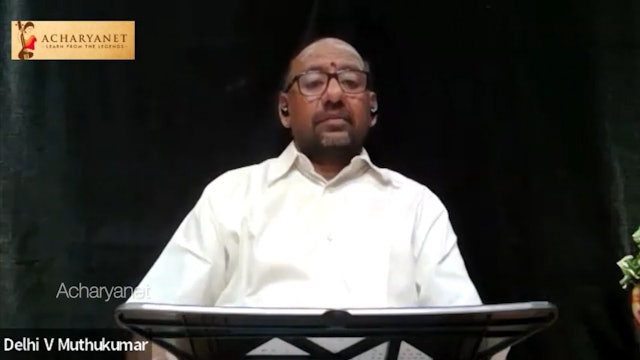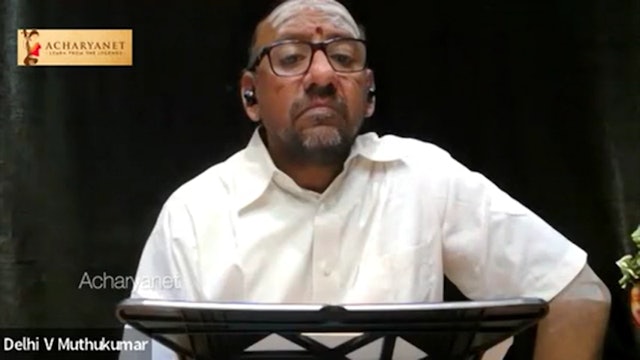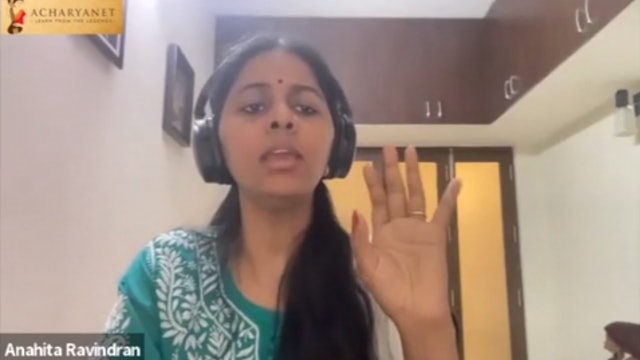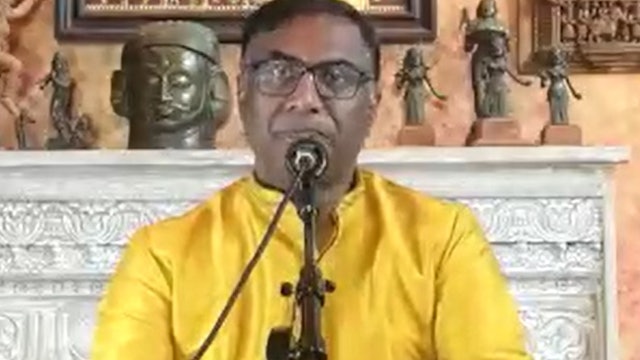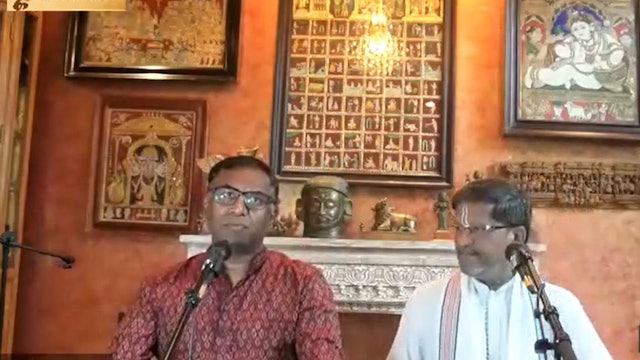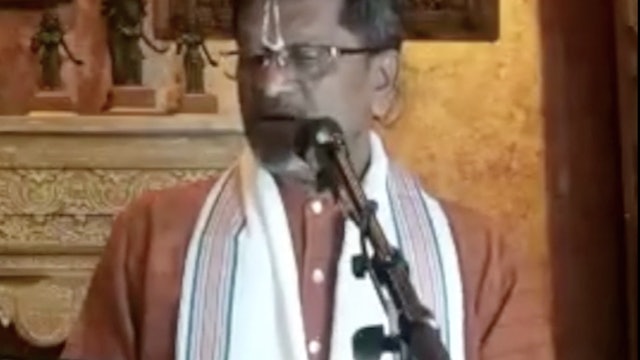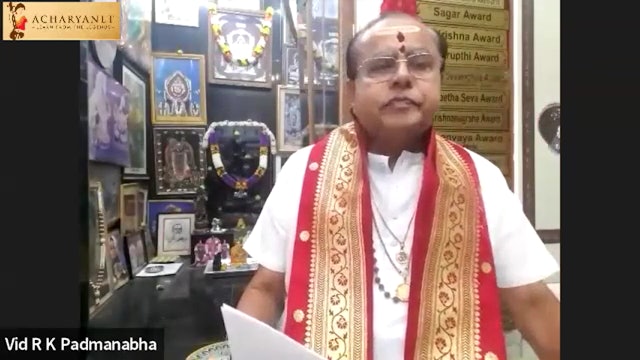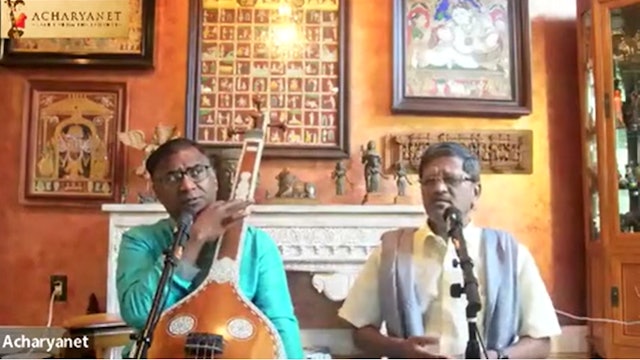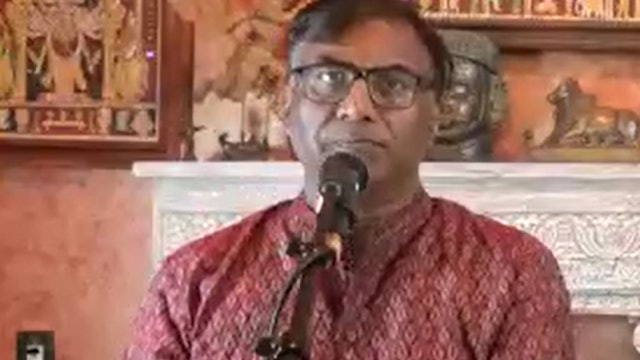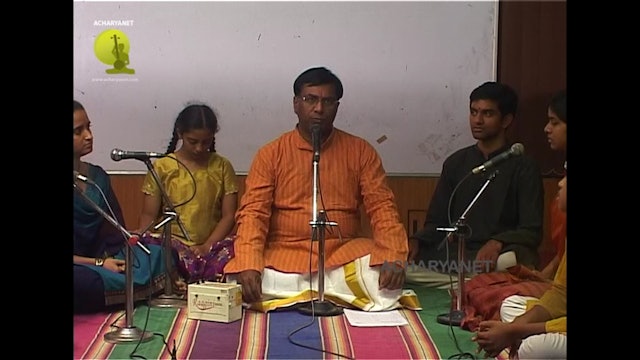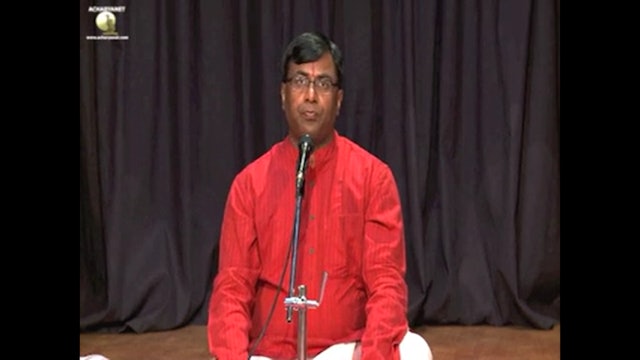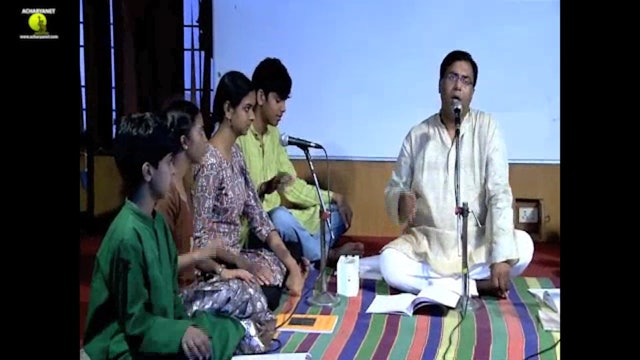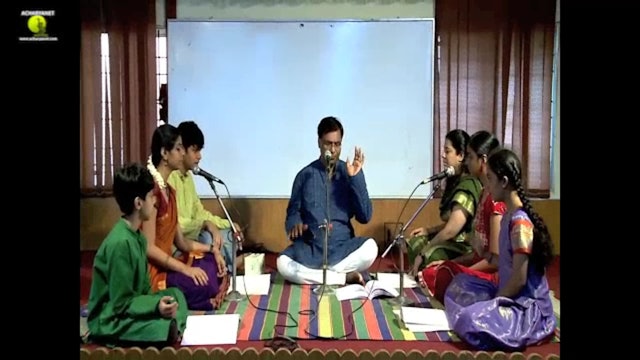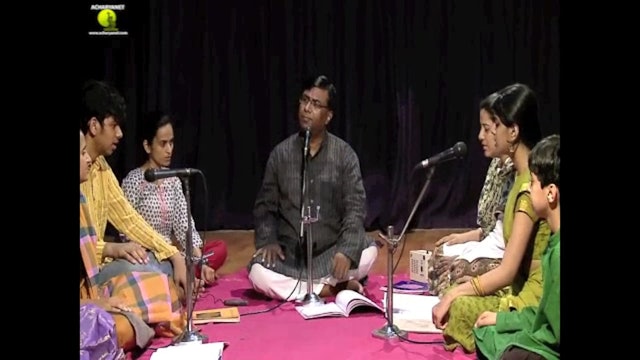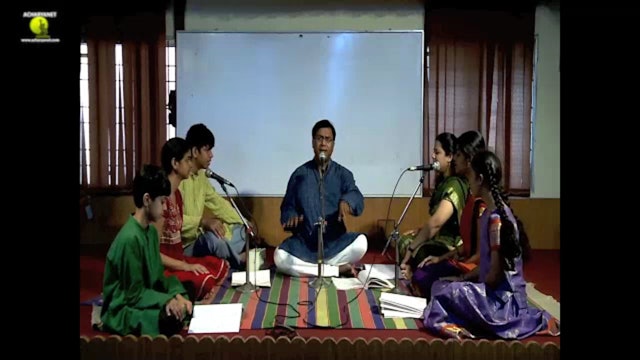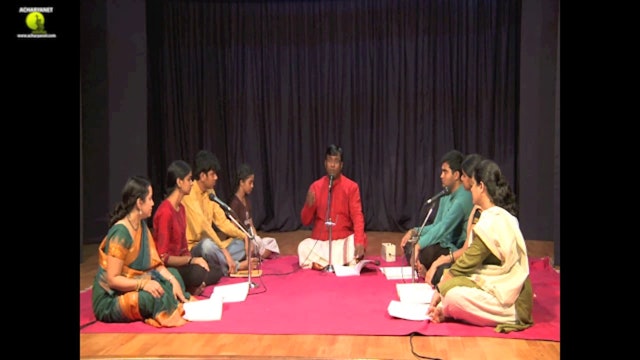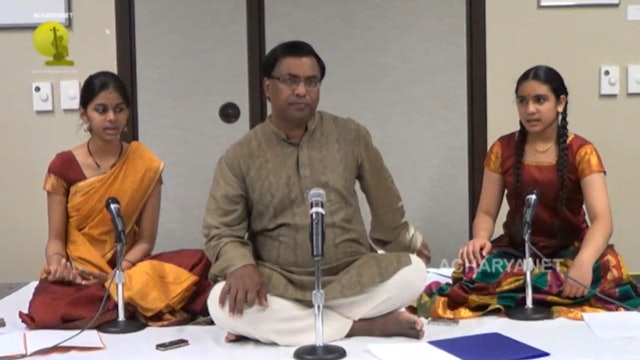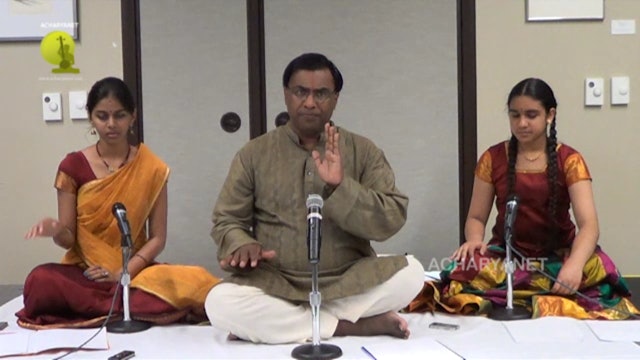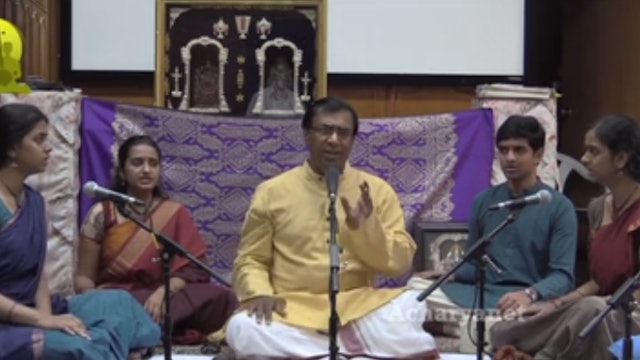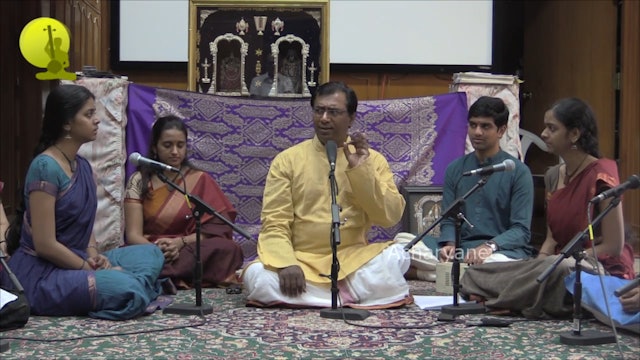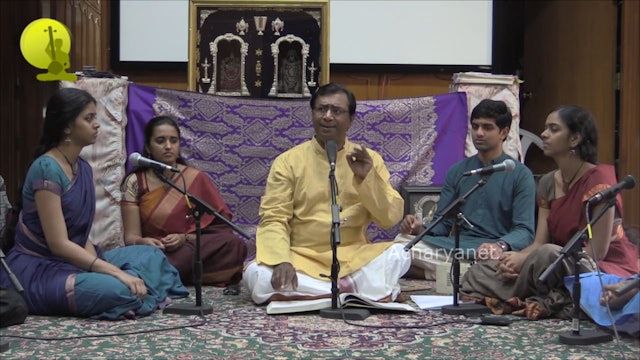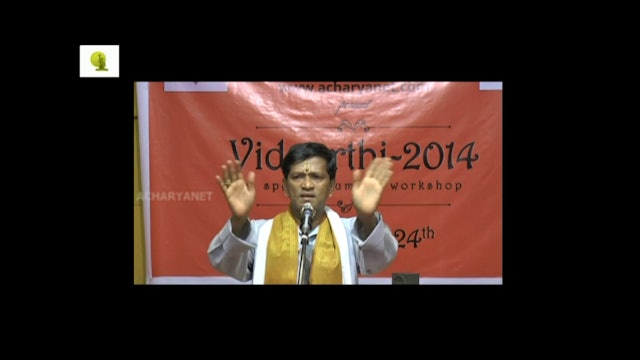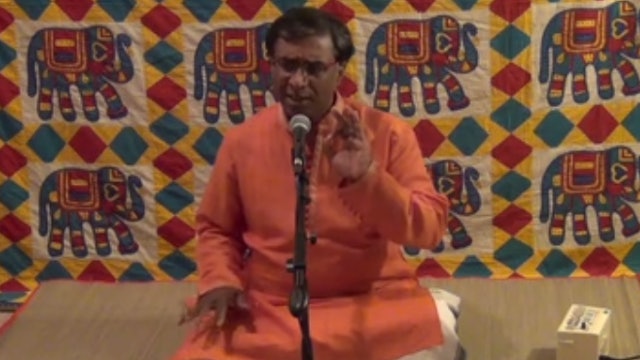Varnams
Varnams are a key component of Carnatic classical music. This musical form is a confluence of Swaras and lyrics. Carnatic musicians usually use Varnams as warm-ups for the opening ceremony of a concert, or even as the central piece of the concert. Being very intricate renditions, Varnams are very beneficial to vocalists in developing vocal culture and maintaining their pitch and rhythm.
Varnams are an integral part of Carnatic music. Students get to learn Varnams at an intermediate stage when they have accomplished mastery over Geethams or even simple Kirthis.
Varnams are a blend of Swaras (SolfaSyllables) and lyrics with long vowels, which makes them challenging to render with clarity and emotional appeal. But the one who masters these Varnams can explore the deep treasure of Carnatic music with ease and grace.
Learn varnam by great gurus we have included a collection of popular varnams and some rare varnams. The essential methods of practice and delivery are also emphasized in these lessons.
Types of Varnams
Varnams are broadly classified into three types:Tana Varnams, PadaVarnams and ChowkaVarnams.
The key difference between Tana Varnams and PadaVarnams is the lyrical aspect. While Tana Varnams are primarily considered as pure vocal exercises, the PadaVarnams are lyric-centered. They are widely used as accompaniments to traditional south Indian dance recitals like a BharatanatyamVarnam.
Tana Varnams:
Tana Varnams are the most complex form of vocal exercises in the Carnatic music repertoire. They are frequently used in concerts and serve as excellent pieces for a concert-opener.
Tana Varnams are divided into two phases – the Purvanga and the Uttarang.
The Purvangam consists of a Pallavi, Anupallavi and Swaras (Solfa passages), while the Uttarang comprises of a Charanam and three to five rounds of Swaras.
Tana Varnams are widely known for Vachika or vocal expression.
The melodic patterns in a Varnam are considered to be characteristic patterns of a particular raga. This genre of Carnatic music bridges the gap between pedagogical etudes and concert music.
Pada Varnams:
Pada Varnams comprise of lyrics accompanying the Charanam Swaras. These Solfa passages may come in various groups or stanzas. Pada Varnams contain much more textual content in the form of lyrics or Sahitya as compared to Tana Varnams. And these are ideal for dance recitals as well, generally inserted as the centerpiece of a dance.
Chowka Varnams:
Chowka Varnams are composed in a slower tempo and are sometimes rendered even in the middle of a concert.
Varnams are structured compositions with various parts like Pallavi, Anupallavi, Charnam, ChittaSwaram, and EttugadaSwaras. These different sections of a Varnam help bring out the natural melody of the raga along with its rhythmic variations.
The Varnam is subdivided into several sections:
Pallavi: This is the foremost section of the Varnam, which is sung with lyrics or Sahitya.
Anupallavi:This is also a summarized revision that is sung with lyrics or Sahitya.
Muktaayi: This section is sung purely with syllables—or Swaras — (like s(sa) r(Ri) g(ga) m(ma) p(pa) d(da) n(ni) (sa). In PadaVarnams, this section is called the MuktaayiSwara-Sahitya.
Charanam:This is sung with lyrics or Sahitya.
ChittaSwara or EttugaddaSwaram: This is entirely sung with syllables. In a PadaVarnam, some lyrics correspond to the Charanamswaras. The swarms may be composed in several groups or stanzas.
Anubandham: This is an epilogue to the Varnam.
Certain varnams have this additional portion at the end,which follows the Charanam and Chitta(Ettugadda) Swaras. It is sung with lyrics or Sahityaand leads back to the Muktaayi(Chitta) Swara or the first Pallavi line itself.
Anubandhams are a traditional aspect more commonly found in old Varnams as compared to newer Varnams.
In modern times, we also find certain old Varnamsbeing sung partially, without the Anubandham part. The most classic example of this is the ViribhoniVarnam in Bhairavi. This Varnam is sung after omitting one of its ChittaSwarasas well as the Anubandham.
Varnams are generally sung in two varieties of talas
Adi Tala (8 beat cycle)
Ata Tala (14 beat cycle)
In most Adi TalaVarnams, the tala is placed in the 2 Kalai version. And so, you place each beat and finger count twice.Ata Tala Varnams, on the other hand, are generally more complicated and advanced.
Some famous Adi Tala Varnams are:
“Sami Ninne” which is composed in Shree ragam by Karur DevuduIyer in Telugu.
“Ninnukori” which is composed in Mohanamragam by PoochiSrinivasa Iyengar in Telugu
“EvvariBodhana” which is composed in Abhogiragam by PatnamSubramaniaIyer in Telugu
“Era Naapai” composed in Todiraagam by PatnamSubramaniaIyer in Telugu
“ValachiVacchi” composed in Navaraaga Malika in Telugu
Some Ata Tala Varnams include:
“Viriboni” composed in Bhairaviragam by PacchimiriamAdiyappa in Telugu
“Nera Nammiti” composed in Kaanadaraagam by PoochiSrinivasaIyengar in Telugu
“Chalamela” composed in Sankarabharanam by Swati Tirunal in Telugu
Importance of Learning Varnams:
Varnams are the foundation of Carnatic music and serve as a beautiful introduction to ragas.
Varnams are very useful in developing the correct voice culture as well as maintaining both the pitch and rhythm.
Tana Varnam is more focused on creating and aiding voice culture. It is often regarded as a voice warm-up exercise.
Learning Varnams are very beneficial to vocalists who wish to approach the notes of a raga, as well as place specific emphasis on these notes due to the demonstration and practice of each element within the Varnam.
Vocalists who wish to improve their Laya find it very useful to practice these Varnams in three different speeds.
Varnams are the most complex form of vocal warm-ups. But students who master this fundamental aspect of Carnatic music can smoothly advance towards further learning of Kritis and Keertanams
-
Dharmamaa - Varamu - Adi - T R Subramanyan
Learn the beautiful Varnam of Shri T R Subramanyan in Varamu,Dharmamaa set to Adi, taught by Vid . Delhi V Muthukumar
Lyrics can be found below:
Notation can be found here
-
Gananatha - Devagandhari - Adi - T R Subramanyan
Learn the beautiful Varnam of Sangeetha Mahamahopadhyaya Prof T R Subramanyan in Devagandhari,Gananatha set to Adi, taught by Vid . Delhi V Muthukumar
Lyrics can be found below:
Notation can be found here
-
Kaman kanaihal - Hindolam Varnam - Adi - Chitravina N Ravikiran
Learn the beautiful Varnam of Shri Sangeet Samrat Chitravina N Ravikiran in Hindolam, Kaman kanaihal set to Adi, taught by Vid. Anahita Ravindran. Lyrics can be found below:
P: kAman kaNaihaL ennai tuLaipadu kaNdum
uLLam urugAdO kaNNAA: tAmarai mugam ravi shashi nayanamE
tArakam ena nin t... -
Ashtadasharagamalika Varnam - Ragamalika - Adi - Chitravina N Ravikiran
Learn to sing the beautiful 18-raga ragamalika varnam composed by Sangeet Samrat Chitravina N Ravikiran. Find the notation here
-
Era napai (Varnam)- Todi - Adi - Patnam Subramania Iyer
Learn the beautiful Adi tala Varnam in the raga Todi composed by Patnam Subramania Iyer taught by Sangeet Samrat Chitravina N Ravikiran
Link for the notation is given here
-
Nee dayai puri - Vasantabhairavi Varnam - Adi - Neyveli Santhanagopalan
Learn the beautiful varnam, Nee dayai puri, in Raga Vasantabhairavi set to Add composed and taught by Shri Neyveli Santhanagopalan. The notation can be found here
-
Gati nee - Saraswati - Adi - Mysore Vasudevacharya (Varnam)
Learn the Varnam in Raga Saraswati, set to Adi tala, a composition of Mysore Vasudevacharya taught by Ganakalabhushana Dr R K Padmanabha.
Notation can be found here
-
Ambikaiyin - Athana varnam - Adi - Neyveli Santhanagopalan
Learn this varnam in raga Atana, Ambikaiyin, composed and taught by guru Shri Neyveli Santhanagopala. The notation can be found here.
-
Vanajakshi (Varnam) - Reetigowla - Khanda Ata - Veenai Kuppaiyer
Learn to sing the beautiful Ata tala varnam of Shri Veenai Kuppaiyer, Vanajakshi, taught by Shri Sangeet Samrat Chitravina N Ravikiran. The notation can be found here.
-
Kalyani Ata Tala Varnam -Vanajakshi ninnekori - Pallavi Gopala Iyer
Learn the beautiful Kalyani Ata Tala Varnam taught by Sangeet Samraat Chitravina N Ravikiran, a Composition of Pallavi Gopala Iyer
-
Sami ninne - Shankarabharanam - Varnam
Learn the popular Shankarabharnam Adi tala varnam, Sami ninne, composition of Veenai Kuppaiyer, from guru Shri Chitravina N Ravikiran. The notation is provided in the Perfecting Carnatic Music 2 ebook.
-
Intamodi - Saranga - Adi Talam - Tiruvotriyur Tyagayyer -Varnam
Learn the popular Saranga varnam, Inta modi, compositon of Tiruvotriyur Tyaggaiyer from guru Shri Chitravina N Ravikiran. The notation is provided in the Perfecting Carnatic Music 2 ebook.
-
Sami ninne - Pantuvarali varnam
Learn the popular Pantuvarali varnam, Samininne, composition of Shatkala Narasaiya from guru Shri Chitravina N Ravikiran. The notation is provided in the Perfecting Carnatic Music 2 ebook.
-
Vanajakshiro - Kalyani - Adi - Ramanathapuram Srinivasa Iyengar - Varnam
Learn the popular Kalyani Adi tala varnam, Vanajakshiro, composition of Nagapattnam Veerasamy Pillai from guru Shri Chitravina N Ravikiran. The notation is provided in the Perfecting Carnatic Music 2 ebook.
-
Jalajakshi - Hamsadhwani- Adi Talam -Varnam – Manambuchavadi Venkata Subbaiyer
Learn the popular Hamsadhwani Adi tala varnam, Jalajakshi, composition of Manambachuvadi Venkata Subbaiyer, from guru Shri Chitravina N Ravikiran. The notation is provided in the Perfecting Carnatic Music 2 ebook.
-
Manchi Samayamide - Devamanohari - Adi tala - Chitravina N Ravikiran - Varnam
Learn the rare Devamanohari varnam, Manchi samayamaide, a composition of Shri Chitravina N Ravikiran, set to Adi talam, taught by the guru himself. The notation is provided in the Perfecting Carnatic Music 2 ebook.
-
Evaribodhana - Abhogi - Adi Tala - Patnam Subramanya Iyer - Varnam
Learn the popular Abhogi varnam, Evari bodhana, a composition of Patnam Subramanya Iyer from guru Shri Chitravina N Ravikiran. The notation is provided in the Perfecting Carnatic Music 2 ebook.
-
Chalamelara - Darbar - Adi Tala - Tiruvotriyur Tyagaiyer - Varnam
Learn the popular Darbar varnam, Chalamelara, composition of Tiruvotriyur Tyagayyer, taught by Sangita Kalanidhi Shri Chitravina N Ravikiran.
See notation here.
-
Chalamela Jesevu - Keeravani Varnam - Vummidishetty Venkataswami Naidu
Learn the rare Keeravani varnam, composition of Vummidishetty Venkataswami Naidu, taught by Sangita Kalanidhi Shri Chitravina N Ravikiran. See notation.
-
Chalamela - Nattaikuranji - Adi Tala-Moolaiveettu Nattuvanar Rangaswamy - Varnam
Learn the Nattaikurunji pada varnam, a composition of Moolaiveettu Nattuvanar Rangaswamy, taught by the Sangita Kalanidhi Shri Chitravina N Ravikiran.
See notation for Nattaikurunji Varnam
-
Sami ninne - Shree Varnam - Adi - Karoor Brothers
Learn the popular Shree Varnam, composition of Karur Brothers taught by Shri Chitravina N Ravikiran. The notation is provided here
-
Ento prema tone - Surati - Adi Tala - Pallavi Gopala Iyer - Varnam
Learn the beautiful Surati varnam, Ento prema tone, composition of Pallavi Gopala Iyer Iyer, taught by Sangeet Samrat Shri Chitravina N Ravikiran.
Notation can be found here
-
Mal marugan - Hindolam - Thanjavur Shankara Iyer - Varnam
Learn the rare Hindolam varnam, Mal marugan, composition of Thanjavur Shankara Iyer, taught by Shri Neyveli Santhanagopalan.
-
Santoshamuga - Abheri Varnam -Chitravina N Ravikiran
Learn the beautiful composition, Santoshamuga, in raga Abheri, set to Misra chapu, taught by guru Shri Chitravina N Ravikiran.
The notation can be found < a href="https://drive.google.com/file/d/1TSMh3EIGtWmj5bqGt2XAUfZmqr4KzxKi/view?usp=drive_link"> here

